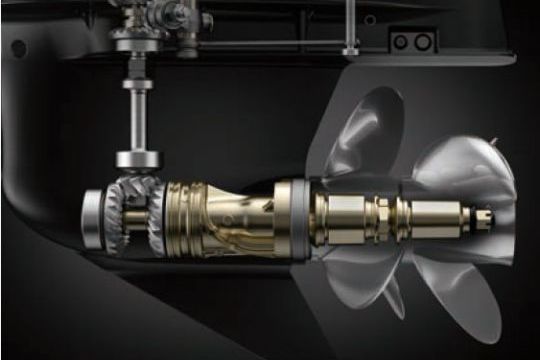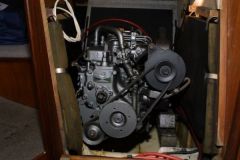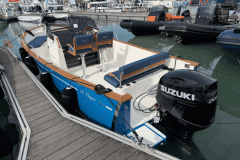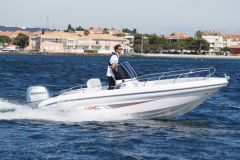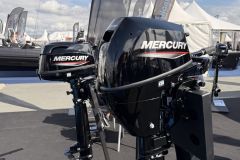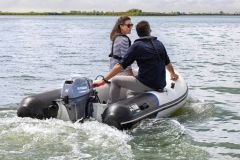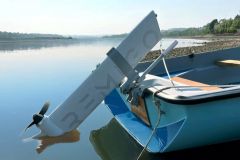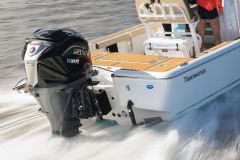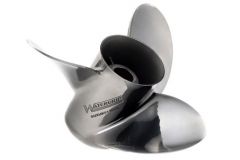What is a contra-rotating propeller?
On a conventional motorboat, propulsion is generally provided by a propeller. Each motor is fitted with a propeller on a shaft or baseplate. But observant boaters and the curious will have noticed that some boats have two propellers mounted one behind the other on a single motor. These are known as counter-rotating propellers. Coaxial, they are driven by the same motor, but in opposite directions, with one pitch to the left and the other to the right. A mechanical system involving two concentric shafts transmits engine power to the two propellers.
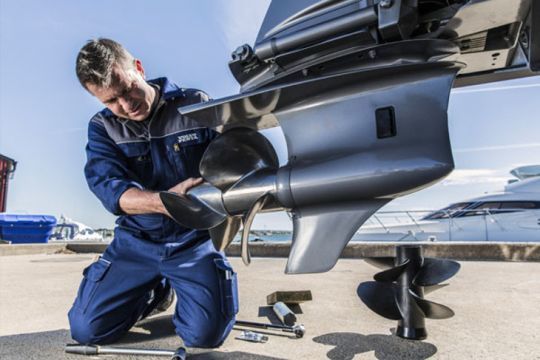
Advantages and disadvantages of the double propeller on a boat
The choice of counter-rotating propellers offers several technical advantages:
- Suppressing the propeller pitch effect : Boaters are generally aware of the pitch effect, which makes maneuvering difficult, especially when reversing. This is because the flow created by the propeller's rotation, and the thrust it generates, are not perfectly aligned with the axis of the shaft line. A slight component turns the boat, and can create a slight list. With a second propeller turning in the opposite direction, the flow is straightened out, enabling the thrust to be perfectly on axis, with benefits for course keeping and precise manoeuvring.
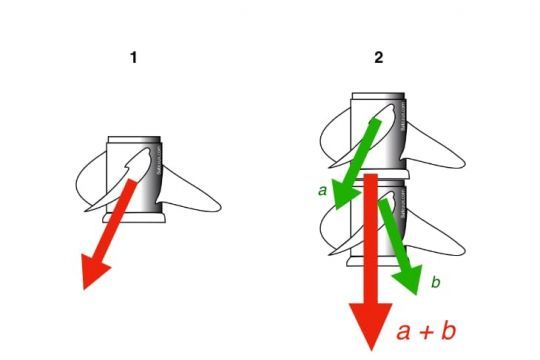
- Superior performance: By using the second propeller to recover the energy dispersed by the first to rotate the flow, hydrodynamic losses are limited, thereby increasing the efficiency of the overall motor-propeller line.
- Propeller diameter limitation : By using two propellers, the surface area for transmitting hydrodynamic forces is greater. To transmit the same power, it is therefore possible to reduce the propeller diameter, but also to limit the pressure on the blades and the risk of cavitation at high speed. Designers can therefore imagine faster boats with shallower draughts.
Of course, the solution is not without negative repercussions. Visit mechanical complexity systems means greater weight and more fragile transmissions. As a result, boat maintenance is heavier and reliability slightly reduced. The cost of counter-rotating systems is generally superior, even if smaller propellers are easier to produce than large-diameter thrusters.
Contra-rotating propeller applications
Although counter-rotating propellers have been used in aviation since the early 20th century, their marine applications began with torpedoes, whose high speed and need for stability made the technology highly relevant for limiting cavitation noise and maintaining course.

In yachting, Volvo Penta has made a major contribution to the popularization of DuoProp technology on its sterndrives, enabling high power to be delivered with a limited propeller size. Mercruiser's competitors also offer this technology. The principle can also be found on Volvo's IPS.
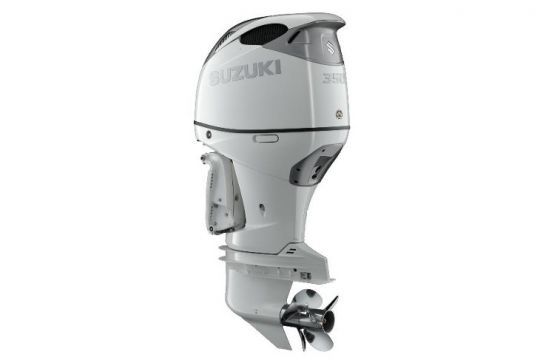
High-power outboard motors from the major brands are now also often fitted with twin contra-rotating propellers. These are found on Suzuki and Mercury models.

 /
/ 